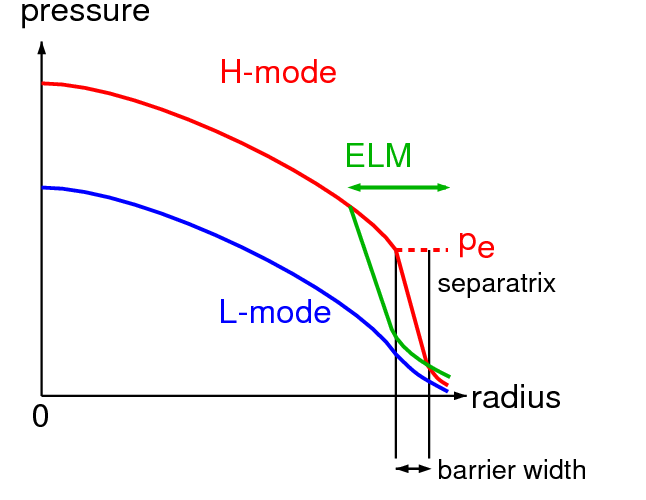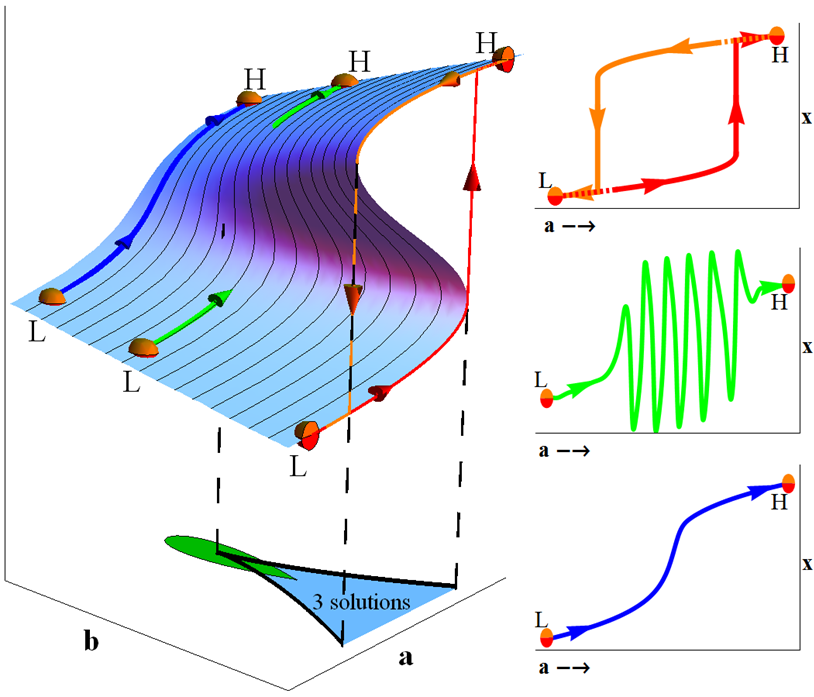
In a tokamak plasma, increased heating usually enhances turbulence, so that the temperature increase is less than proportional. This is called the low-confinement mode (L-mode). Important for tokamak fusion reactors is the emergence, above a critical heating power, of the high-confinement mode (H-mode), in which the temperature increases more. As shown in the figure to the left, the increased pressure in the plasma core arises entirely thanks to a steep gradient near the edge. It has become clear that this is caused by a local strong reduction of the main heat loss mechanism: turbulence.
This heat transport bifurcation exhibits hysteresis: after heating power is increased to a degree such that the plasma jumps from L-mode into H-mode (right figure, red curve), the power can be reduced significantly before the plasma falls back into L-mode (orange curve).
Several competing effects play a role in the plasma edge during H-mode formation, and experiments still leave uncertainty about their relative importance. Despite this uncertainty, we apply the branch of mathematics called bifurcation theory to make definitive statements how L-H and H-L transitions occur when plasma conditions are changed.
For instance, letting cold gas into the plasma decreases the hysteresis effect to the point that the H-mode improvement appears smoothly, not with a jump (right figure, blue curve). Typically, this is what happens if the plasma density is low.
At higher density, the jump transitions and smooth transitions are separated by conditions where a third type of behaviour occurs: oscillatory L-H transitions (right figure, green curve).

The H-mode, which is so advantageous for fusion power, has a problem at too high heating power: sudden instabilities called edge localized modes (ELMs, green in the left figure)) throw out bursts of heat that can damage the wall. We hope to solve this by using the hysteresis: use high power to reach H-mode, then reduce power to hover just above the point where the plasma would fall back to L-mode.
We are developing the necessary sensor-and-control scheme to operate a tokamak near the H-L transition by using our bifurcation model of the L-H transition.
References:
W. Weymiens et al., Comparison of bifurcation dynamics of turbulent transport models for the L-H transition, Phys. Plasmas 21 (2014) 052302
H.J. de Blank et al., Degenerate Bogdanov-Takens bifurcations in a one-dimensional transport model of a fusion plasma, Physica D 331 (2016) 13